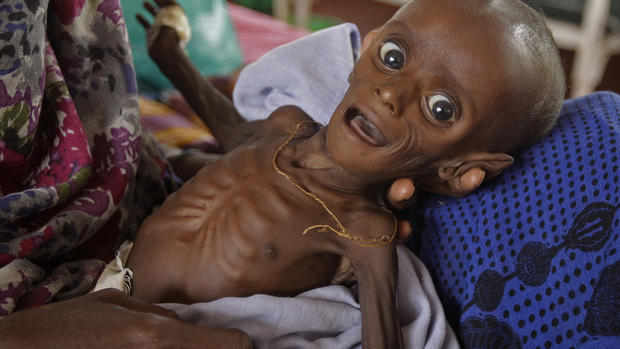Kenyans' resentment of Somali refugees a concern
In 20 years, a seemingly barren desert has been transformed in Kenya.
On shifting sands sits what's become the nation's third-largest city, Dadaab, with a population of more than 400-thousand - and growing.
It's a city nearly all of whose residents are Somali refugees who fled across the border.
"Refugees here are not refugees out of choice, not for economic reasons, but to save their lives," William Spindler, a spokesman for The Office of the United Nations High Commissioner for Refugees (UNHCR), told "Early Show" co-anchor Erica Hill. "They're fleeing wars, fleeing famine, and they are literally coming because they have no choice."
Dadaab's three camps were originally built to house 90,000 refugees.
Twenty years later, they are now at nearly five times capacity, pushing farther into the Kenyan desert.
Rapes, attacks up against Somalis fleeing famine
Complete coverage: East Africa famine
East Africa famine: How to help
"The local community," says Spindler, "has shown a great deal of hospitality, but hospitality has limits, too."
Some homes are a perfect example.
Originally part of a planned 15,000 home expansion for the refugee overflow, the U.N. project, which included schools, was stopped by the Kenyan government earlier this year after just 116 homes had been built.
"When they see these houses, permanent structures, they think the refugees will stay a very long time," Spindler said of Kenyans in the vicinity.
It's an idea that doesn't sit well with many of them - they also suffer in the drought, but don't see the same help as the refugees.
Some are employed in the camps, and they can all use the camps' hospitals.
While the plan to move refugees to the area is back on, construction is not. Tents will be added, instead of homes, in part due to the overwhelming need and massive influx of refugees.
But land issues aren't the only problem for Dadaab.
The exploding population is straining the region's already limited resources, chief among them: water.
Is there going to be a time when this area can no longer support them?
"That is our greatest concern," Spindler replied. "We think that we are very close to the point where the maximum population cap may be reached."
Even as that reality looms, the U.N. has made it clear: their mission is to help. And despite the capacity issues, no one will be turned away.
